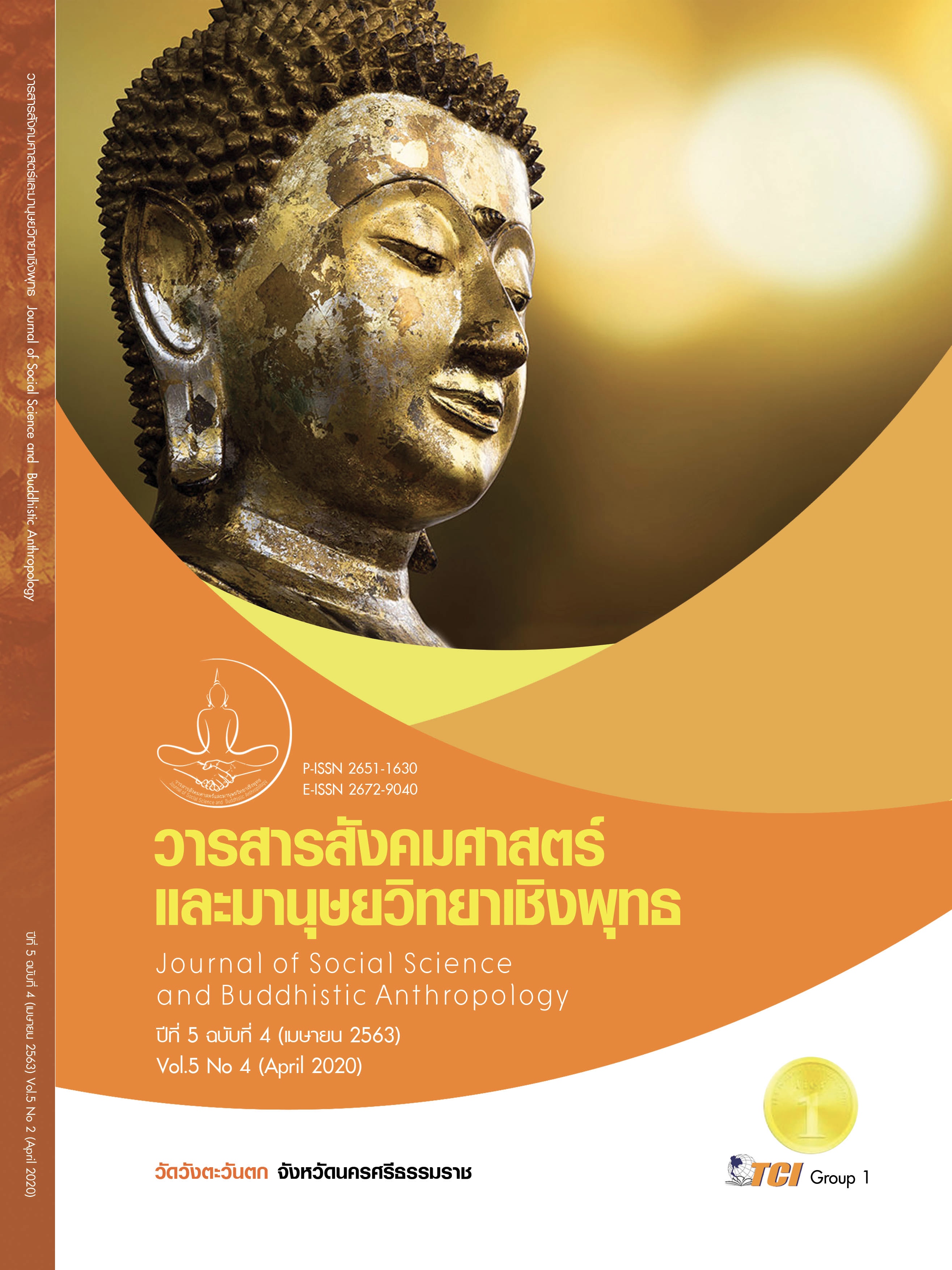THE NURSE’S CHARACTERISTICS IN END OF LIFE CARE ACCORDING TO BUDDHIST PSYCHOLOGY
Keywords:
Nurse’s Characteristics, End of Life Care, Buddhist PsychologyAbstract
This research has three objectives; 1) to study the nurse’s characteristics on end of life care according to Buddhist psychology 2) to construct causal relationship model of the nurse on end of life care according to Buddhist psychology 3) to test the validity and present the causal relationship model of nurse’s characteristics on end of life care according to Buddhist psychology.
It was the mixed research method between quantitative and qualitative research. The key informants were the experts Buddhists, psychologists, administrators in a small organization selected by purposive sampling, 9 key informants. The sample used in the quantitative research was a purposive sampling, 400 participants. The instruments used in the research comprised of the questions for interviewing and a questionnaire. The quantitative data was analyzed by descriptive statistics, the correlation was analyzed by a package program, the consistency between model and the empirical data was analyzed by LISREL program. The results found that causal relationship model of the nurse on end of life care according to Buddhist psychology accords to the empirical data. Chi-square was 103.91, degree of freedom (df) was 83, probability (p) was .060, goodness of fit index (GFI) was .97, adjusted goodness of fit index (AGFI) was .59, and root mean square error of approximation was .025. The variance of Buddhist psychological nursing was 49.00.
References
กนิษฐา ตัณฑพันธ์. (2541). ลักษณะทางจิตสังคมและลักษณะทางพุทธศาสนาที่เกี่ยวข้องกับพฤติกรรมการให้การพยาบาลตามบทบาทเชิงวิชาชีพ. ใน วิทยานิพนธ์วิทยาศาสตรมหาบัณฑิต สาขาการวิจัยพฤติกรรมศาสตร์ประยุกต์. มหาวิทยาลัยศรีนครินทรวิโรฒประสานมิตร.
จุฬาลงกรณ์มหาวิทยาลัย. (2560). การเลือกกลุ่มตัวอย่าง. เรียกใช้เมื่อ 11 ธันวาคม 2560 จาก http://pioneer.Netserv.chula.ac.th
ดลนิตา ปานสุวรรณ. (2559). ความเป็นกัลยาณมิตรของหัวหน้าหอผู้ป่วยตามประสบการณ์ของพยาบาลประจำการโรงพยาบาลศูนย์ภาคใต้. วารสารพยาบาลสงขลานครินทร์, 36(1), 21-40.
ดุษฎี โยเหลา และคณะ. (2538). ความสัมพันธ์เชิงสาเหตุระหว่างลักษณะทางพุทธศาสนาลักษณะทางจิตและผลทางปฏิบัติงานตามหน้าที่ของครูและพยาบาล. วารสารพยาบาลกระทรวงสาธารณสุข, 2(1), 77-90.
บังอร ไทรเกตุ. (2558). คู่มือสำหรับประชาชน: การดูแลผู้ป่วยระยะสุดท้ายแบบประคับประคอง. (พิมพ์ครั้งที่ 7). นนทบุรี: สำนักงานคณะกรรมการสุขภาพแห่งชาติ.
พุทธทาสภิกขุ. (2509). ความตายไม่มี. กรุงเทพมหานคร: โรงพิมพ์สุทธิสารการพิมพ์.
มหาจุฬาลงกรณราชวิทยาลัย. (2535). พระไตรปิฎกภาษาไทยฉบับมหาจุฬาลงกรณราชวิทยาลัย. กรุงเทพมหานคร: มหาจุฬาลงกรณราชวิทยาลัย.
สภาการพยาบาล. (2562). คุณลักษณะพยาบาลที่ผู้รับบริการคาดหวังและพึงพอใจ. เรียกใช้เมื่อ 15 มิถุนายน 2562 จาก https://www.tnmc.or.th
สันต์ หัตถีรัตน์. (2552). การดูแลผู้ป่วยให้ตายดี. กรุงเทพมหานคร: โรงพิมพ์พิมพ์ดี.
สุดารัตน์ สิทธิสมบัติ. (2550). การดูแลผู้ป่วยระยะสุดท้าย. เชียงใหม่: มหาวิทยาลัยเชียงใหม่.
สุวคนธ์ กุรัตน์ และคณะ. (2556). การดูแลผู้ป่วยระยะสุดท้าย: มิติใหม่ที่ท้าทายบทบาทของพยาบาล. วิทยาลัยพยาบาลศรมหาสารคาม.
Kirchhoff, K. T. & Beckstrand, R. L. (2000). Critical care nurse’ perceptions of obstacles and helpful behaviors in providing end of life care to dying patients. . American Journal of Critical Care, 9(2), 96-105.
National Health Commission Office. (2011). Manual of health care services: laws and practices on end of life care. Nonthaburi: National Health Commission Office.
WHO Publications. (2012). WHO Definition of Palliative Care. Palliative Care: symptommanagement and end - of - life care.








